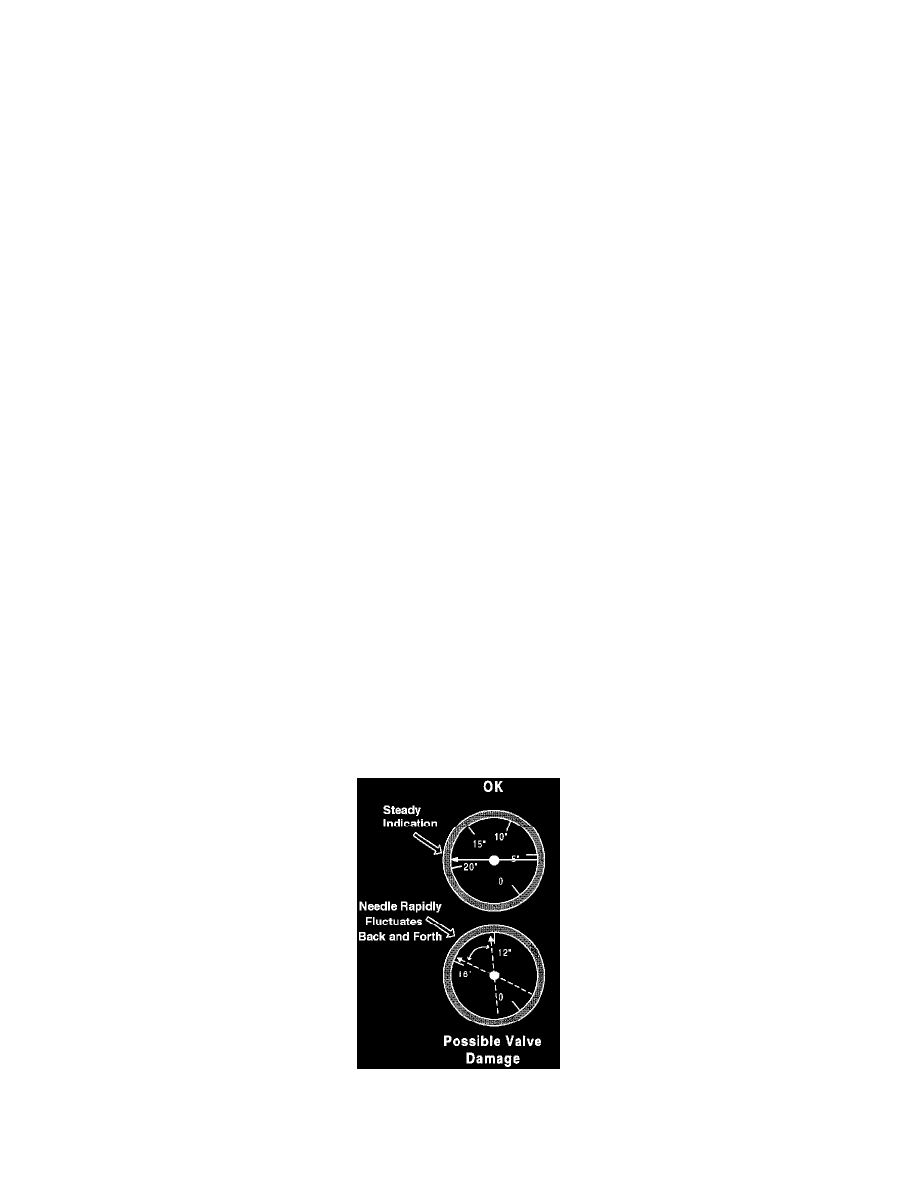940 L4-2.3L SOHC VIN 88 B230F (1992)

timing belt.
OTHER RELATED PROBLEMS
The Timing Belt has Jumped Teeth
-
If the belt is excessively worn, loose, or missing teeth it is possible for the belt to jump teeth on the crankshaft.
-
A belt which is off by just one tooth will cause an engine to run very poorly or not run at all.
-
A belt which is off by more than one tooth will generally prevent the engine from starting.
-
To verify the problem, remove the timing belt covers and check the crankshaft and camshaft alignment marks.
The Camshaft is Seized
-
A seized camshaft will produce the same symptoms as a broken timing belt.
WARNING: Rotating the camshaft with the timing belt removed on an interference engine can result in additional valve damage.
INTERFERENCE/FREE RUNNING
Interference - Upon reaching Top Dead Center a piston will impact a valve which is fully open. This situation occurs when the timing belt breaks
and a valve is left fully open while the pistons continue to operate.
NOTE: This engine is an Interference design.
Free Running - The engine has been designed such that should the timing belt break there will still be clearance between a fully open valve and a
piston at TDC.
Valve Damage - Interference engines will generally bend intake or exhaust valves when a timing belt is broken. When a timing belt breaks the
rotational momentum of the camshaft will cause several valves to open and close out of sequence with the movement of the pistons.
Any valve which is left open when the associated piston reaches TDC will be struck and bent. Bent valves will generally stick in a partially open
position, resulting in a loss of vacuum and compression on that cylinder.
If a timing belt breaks during normal city or highway driving the probability that an interference engine will bend at least one valve is very high.
NOTE: If a timing belt breaks, an interference type engine will not always bend or damage valves. If the timing belt breaks during start-up
with camshaft remaining in a position where no valve is fully open there will be no valve damage.
Free running engines will generally not bend or damage valves when a timing belt is broken. However the design clearance between a fully open
valve and a piston at TDC may be quite small (<0.020 inches) . A build up of carbon on top of the piston in conjunction with improperly adjusted
valve clearances can result in a free running engine bending valves when the timing belt breaks.
VERIFYING VALVE DAMAGE
Install a new timing belt with the camshaft and crankshaft aligned properly and attempt to start the engine. If the engine starts and runs smoothly
with steady high vacuum levels, the valves are not damaged.
WARNING: Rotating the camshaft with the timing belt removed on an interference engine can result in additional valve damage.
If the engine fails to start or runs roughly with the manifold vacuum reading rapidly oscillating over a 4-6 inch range there may be valve damage.
NOTE: Verify that the crankshaft and camshaft are aligned properly. A timing belt which is off Dust one tooth may produce similar
